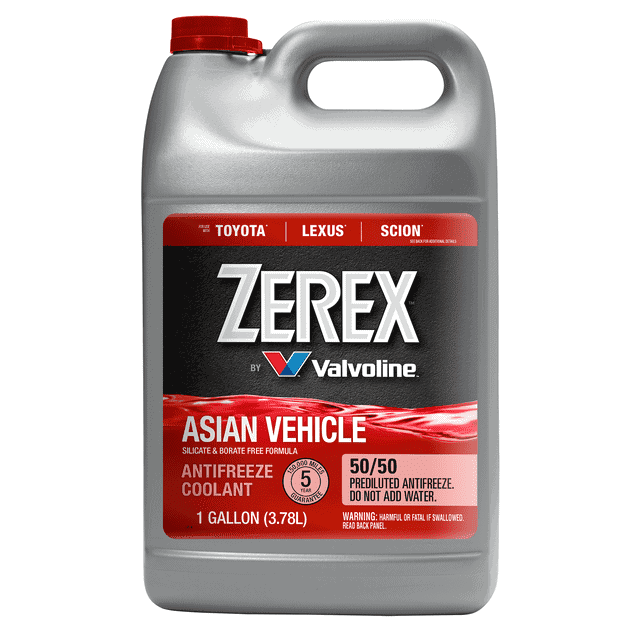In general, it is not advisable to mix red and green coolant (also known as antifreeze) unless there is a specific reason for doing so. Coolant is essential for regulating your engine’s temperature and preventing it from overheating or getting too cold. It comes in various colors, including green, red, orange, and yellow. Red and green coolants, in particular, have different chemical compositions that do not mix well. Therefore, if your vehicle currently has one type of coolant and you plan to switch to another, it is best to fully drain the existing coolant before proceeding.
Maintaining your car’s engine in optimal condition is crucial, and understanding the role of coolant in this process is key. Mixing different types of coolant should be approached with caution, as it can significantly impact your vehicle’s health. Always consult your vehicle’s manual or a professional mechanic if you are unsure. This article will provide insights and guidelines to ensure that your car’s cooling system functions properly.
Understanding Coolant Colors and Compatibility
The Different Types of Coolant
Coolant colors often indicate the type of coolant and its chemical composition. Here’s a basic breakdown:
- Green (IAT): This is the traditional Inorganic Acid Technology coolant, known for its shorter lifespan and compatibility issues with newer vehicles.
- Red/Pink (OAT): Organic Acid Technology coolant is designed for longer life and better protection against corrosion.
- Orange (HOAT): Hybrid Organic Acid Technology coolant combines aspects of both IAT and OAT coolants.
- Yellow (HOAT or Si-OAT): This can either be another type of HOAT coolant or a Silicated OAT coolant, offering long life and good protection.
Compatibility Issues
Mixing different types of coolant can lead to several problems, including:
- Reduced Lifespan: Mixing coolants can degrade their protective properties, reducing their lifespan and requiring more frequent changes.
- Corrosion: Incompatible coolants can react and form a gel-like substance that clogs your cooling system and causes corrosion.
- Engine Damage: In severe cases, mixing coolants can lead to engine overheating and costly damage.
Mixing Guidelines
While mixing different coolants is generally not recommended, here’s a table outlining general compatibility:
| Coolant Type | Compatible with |
|---|---|
| Green (IAT) | Green (IAT) |
| Red/Pink (OAT) | Red/Pink (OAT), sometimes Orange (HOAT) |
| Orange (HOAT) | Orange (HOAT), sometimes Red/Pink (OAT) |
| Yellow (HOAT/Si-OAT) | Check manufacturer’s recommendations |
Always consult your vehicle’s owner’s manual for specific recommendations on the type and color of coolant to use. If you’re unsure, it’s best to flush your cooling system and refill it with the correct coolant type.
Important Note
If you accidentally mix coolants, monitor your engine temperature closely and have your cooling system flushed and refilled with the correct coolant as soon as possible.
The Differences Between Red and Green Coolant
Red Coolant
Typically using Organic Acid Technology (OAT), red coolant is known for its longevity, often functioning effectively for an extended period. Red antifreeze, often referred to as Dexcool, is a product of the combination of OAT and Inorganic Acid Technology (IAT), forming Hybrid Organic Acid Technology (HOAT). This coolant is efficient in enhancing the lifespan of water pumps and other components of the cooling system.
Green Coolant
An older antifreeze type, green coolant is made using Inorganic Additive Technology (IAT) and is generally used in vehicles from the early 90s and older. It contains inorganic additives and is characterized by a shorter functional period than red coolant. Green antifreeze is less expensive but requires more frequent replacement.
Why Mixing Red and Green Coolant Is Not Advisable
Mixing red and green coolant can lead to several problems:
- Shortened Lifespan of Coolant: The interaction of the different additives in red and green coolants can reduce the lifespan of both antifreeze types.
- Coolant System Disruption: Chemical interactions can severely impair the functioning of the cooling system, leading to clogging and reduced vehicle performance.
- Damage to Cylinder Gasket: The mixture can create a strong acidic effect, wearing down the cylinder gasket and potentially causing leaks.
- Clogging the Water Pump: Incompatible elements in the mixture can interrupt the coolant distribution, leading to overheating and potential engine damage.
- Reduced Coolant Performance: Mixing the coolants can compromise the anti-corrosion properties, leading to increased corrosion and rust.
Dealing with Incompatible Coolant Mixtures
If you’ve inadvertently mixed red and green coolant, it’s important to address the issue promptly:
- Flush the Incompatible Coolant: The first step is to flush out the incompatible mixture, ideally with the help of a professional mechanic.
- Replace the Coolant: Refill the system with compatible antifreeze, adhering to the manufacturer’s recommendations.
- Regular Coolant Checks: Keep an eye on the coolant level and concentration to ensure optimal functioning.
Mixing Coolants of the Same Type
While it’s not advisable to mix red and green coolants due to their different technologies and compositions, coolants of the same type can be mixed. It’s crucial, however, to know the formula or technology of your antifreeze before mixing with other types.
FAQs
How often should I change my car’s antifreeze?
Generally, antifreeze should be changed every 30,000 to 60,000 kilometers, though this can vary based on the type of antifreeze and the vehicle.
What are the consequences of using the wrong type of antifreeze?
Using the wrong antifreeze can lead to corrosion, damage to major engine components, overheating, and potentially serious engine failure.
Can mixing different antifreeze types cause engine damage?
Yes, mixing incompatible antifreeze types can lead to gel formation, clogging, and impaired cooling system function, which can cause engine damage.
Is it necessary to flush the cooling system after mixing antifreeze?
If you’ve accidentally mixed incompatible coolants, it’s crucial to flush the system to prevent potential damage.
Can I use any color antifreeze in my car?
The color of the antifreeze is not always indicative of its type. Always check the label and your car’s manual to ensure compatibility.
What is the main difference between red and green coolant?
Red coolant, typically using OAT, has a longer lifespan and is more efficient, while green coolant, made with IAT, is suitable for older vehicles and has a shorter lifespan.
Can the wrong coolant affect the water pump?
Yes, using the wrong coolant or a mix of incompatible coolants can damage the water pump and lead to overheating.







